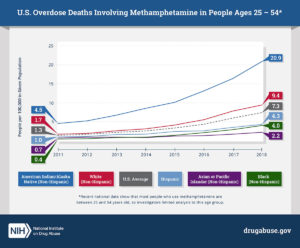- by For Seniors Magazine
- June 14, 2023
Elder abuse is an unfortunate yet prevalent issue that is often overlooked and underreported, making it a hidden problem in many communities. It’s vital to shed light on this problem, increase public awareness, and empower people to protect their aging loved ones. The objective of this post is to discuss the different signs of elder abuse you should be aware of. Understanding these signs will allow you to take necessary action promptly if you suspect elder abuse is occurring.
Deciphering The Complexities Of Elder Abuse

Elder abuse is an intentional or negligent act by a caregiver or any other individual that causes harm or a serious risk of harm to a vulnerable elder. This harm isn’t only physical. Elder abuse can manifest in many forms, including emotional, sexual, neglect, and financial exploitation.
Contrary to common misconception, elder abuse is not confined to nursing homes or assisted living facilities. It can happen in the most trusted environments, including the elder’s home and family. Understanding this helps you to keep a vigilant eye out for any signs of abuse, irrespective of where the elder resides.
The Prevalence Of Elder Abuse

According to the World Health Organization, around 1 in 6 people aged 60 and older experienced some form of abuse in community settings during the past year as of 2017. Regrettably, this is likely an underestimate, as only 1 in 24 elder abuse cases are reported, primarily because victims are often afraid or unable to report.
Sponsored Content:
Take Surveys, Earn Rewards!
The hidden nature of this issue stems from a variety of factors. Often, the elder feels a sense of loyalty or fear towards their abuser. They may also be unaware that they are abuse victims, especially in financial exploitation cases. These factors underline the necessity for friends, family, and community members to be aware of the signs of elder abuse.
Physical Signs Of Elder Abuse

Physical abuse is one of the more detectable forms of elder abuse. Unexplained injuries such as bruises, welts, or scars, especially if they appear symmetrically on two sides of the body, can indicate abuse. Other signs could include broken bones, sprains, dislocations, reports of a drug overdose, or apparent failure to take medication regularly.
However, it’s essential to note that these signs could also result from medical conditions, such as bruises from blood thinners. Therefore, a single sign doesn’t necessarily indicate abuse. But a pattern or several signs are cause for concern and require prompt action.
Emotional Signs Of Elder Abuse

Emotional abuse may not leave physical marks, but its impact can be just as harmful. Signs of this form of abuse can include unusual depression, anxiety, or unexplained withdrawal from normal activities. Victims may also show signs of being scared or anxious around certain individuals or display a lack of interest or enthusiasm in life.
It’s crucial to remember that these signs could also be symptomatic of mental health issues or dementia. But as with physical signs, patterns or multiple signs should raise alarm bells and be investigated.
Financial Signs Of Elder Abuse

Financial exploitation is a common form of elder abuse, and signs typically present themselves in the form of sudden changes in financial circumstances. Unusual withdrawals, evidence of acquiring unnecessary goods or services, or changes in wills and power of attorney documents are other indications.
Despite having enough money, a pattern of unpaid bills or collection letters can also indicate financial abuse. The elder might also mention missing property or possessions, or a previously uninvolved person might suddenly start taking an intense interest in the elder and their finances.
Signs Of Neglect

Neglect is another form of elder abuse that often goes unnoticed. Signs of neglect can include unusual weight loss, malnutrition, dehydration, and unattended or untreated health problems. Other signs might be poor hygiene, unclean clothing, or untreated bed sores.
Unsafe living conditions, such as lack of heat, faulty electrical wiring, and other fire hazards, can also indicate neglect. Remember, these signs may not necessarily indicate intentional neglect but could be a sign that the caregiver is unable to meet the elder’s needs.
The Role Of Caregivers

Caregivers play a vital role in the welfare of the elderly. However, signs of stress in caregivers, such as frequently missed appointments, noticeable fatigue, and apparent substance abuse, could indicate a potential risk for elder abuse. If the caregiver restricts access to the elder, it’s another red flag.
Encouraging healthy caregiver relationships is key. It’s crucial to remember that the majority of caregivers are doing their best under challenging circumstances. The focus should be on providing support and resources to prevent caregiver burnout and subsequent elder abuse.
How To Talk To Elders About Abuse

Conversations around abuse are sensitive, and it’s essential to approach elders with care and respect. Always assure them of their safety and explain that the discussion is for their welfare. Avoid confrontational or accusatory language, focusing instead on your concern for their well-being.
Use open-ended questions to invite them to share their experiences. It’s crucial to listen carefully, respect their feelings, and reassure them that they are not alone. Remember, the goal is to make them feel secure and supported, not distressed or defensive.
Reporting Elder Abuse

If you suspect elder abuse, it’s crucial to report it. Depending on the immediacy of the situation, you might need to call the local law enforcement agency or Adult Protective Services. Do not confront the abuser directly, especially if you suspect physical abuse, as it might escalate the situation.
Reporting elder abuse can seem overwhelming, but remember, taking action can prevent further harm and potentially save lives. Understand that you don’t need to prove the abuse to report it. As long as you have reasonable cause to believe that an elder is being abused, it’s important to alert the authorities.
Resources For Victims And Their Families

Various organizations and resources can assist victims of elder abuse and their families. Nationally recognized organizations like The National Center on Elder Abuse (NCEA) and The Elder Justice Initiative provide valuable resources. These include state-specific contact information, factsheets, and toolkits.
Mental health resources are also crucial, as victims of abuse often experience emotional trauma. Therapy and counseling services can help them heal. Legal resources can assist in navigating the complexities of legal proceedings, particularly in cases of financial exploitation.
Prevention Of Elder Abuse

Preventing elder abuse starts with education and awareness. Knowing the signs and understanding the problem are the first steps. However, fostering open communication, showing respect for the elderly, and cultivating a community of care are equally important.
Be proactive in checking on the elderly in your community. Establish trust and reassure them that they can confide in you. Elder abuse thrives in silence and isolation, so maintaining regular contact can go a long way in preventing it.
Be Aware Of The Signs Of Elder Abuse
Elder abuse is a critical issue that requires collective effort and awareness to combat. Recognizing the signs of elder abuse is the first step toward prevention and intervention. Remember, your actions can significantly impact an elder’s life and well-being. By spreading the word and promoting awareness, we can ensure the dignity and respect our elders deserve.
Resources
- The National Center on Elder Abuse (NCEA) – This organization provides information, tools, and resources related to elder abuse prevention. Their website offers state-specific resources for reporting elder abuse. Visit NCEA
- The Elder Justice Initiative (EJI) – This U.S. Department of Justice program provides a wealth of information, including how to report elder abuse and financial scams targeting the elderly. Visit EJI
- National Adult Protective Services Association (NAPSA) – NAPSA is a non-profit organization with a mission to improve the quality of services for adults who are vulnerable, and to promote their independence and the right to make their own choices. Visit NAPSA
- Eldercare Locator – This public service of the U.S. Administration on Aging connects you to services for older adults and their families. They can also provide you with resources for identifying and reporting elder abuse. Visit Eldercare Locator
- Consumer Financial Protection Bureau (CFPB) – The CFPB provides resources to help prevent financial exploitation of the elderly. Visit CFPB
- National Institute on Aging (NIA) – Part of the U.S.’s National Institutes of Health, the NIA provides information on health and well-being of older adults. It also provides resources related to elder abuse and neglect. Visit NIA
- National Council on Aging (NCOA) – The NCOA is a respected national leader and trusted partner to help people aged 60+ meet the challenges of aging. Visit NCOA
Remember, if you believe an elder is in immediate, life-threatening danger, contact the police or other local law enforcement agencies directly.Reasons Why You Are Not Sleeping Through The Night




